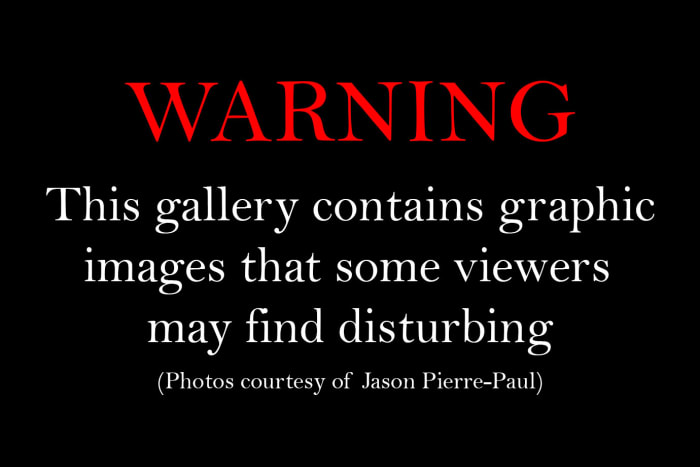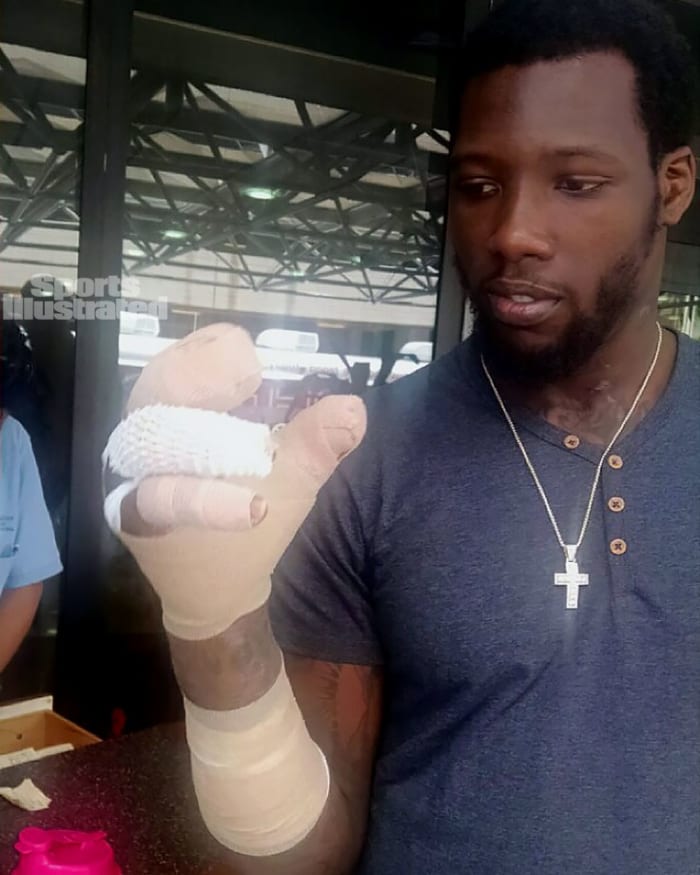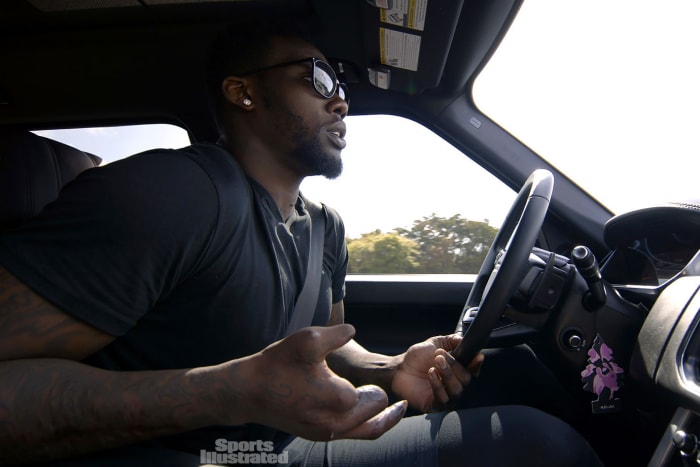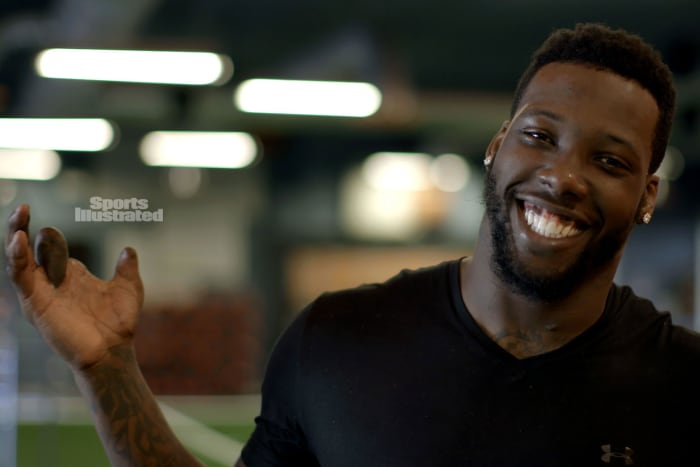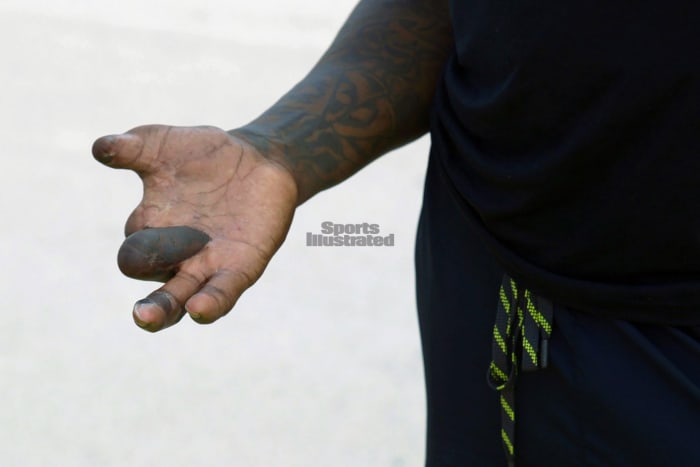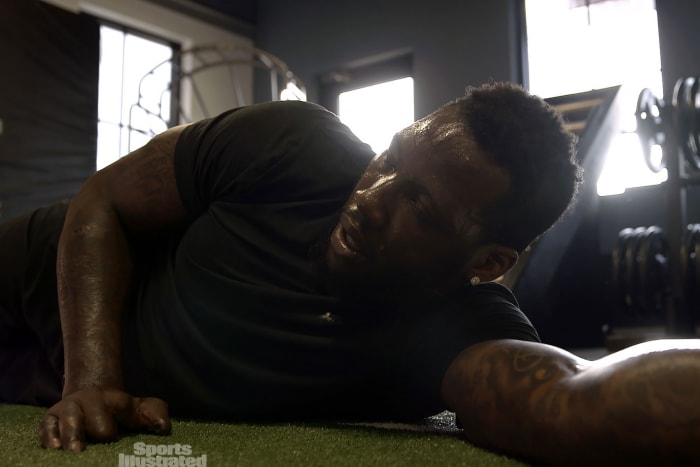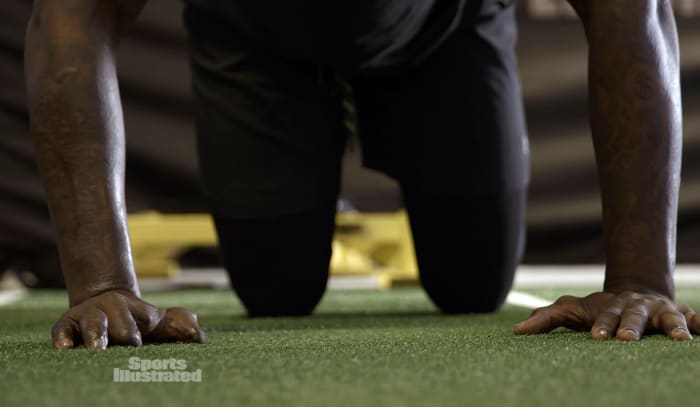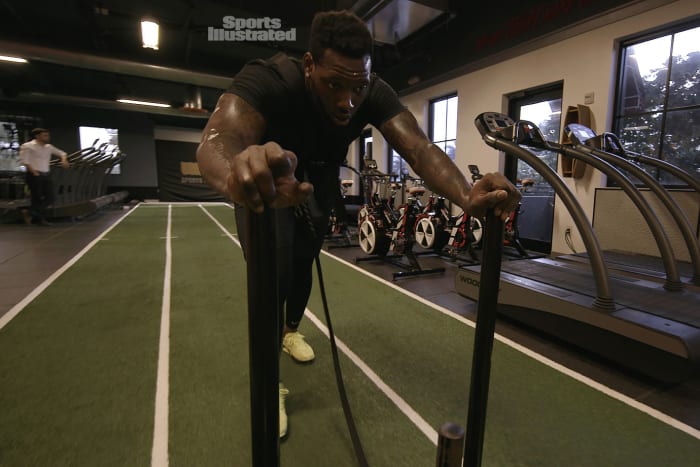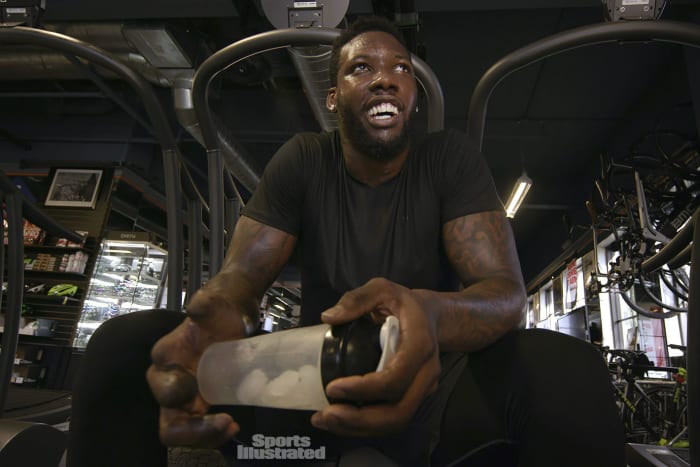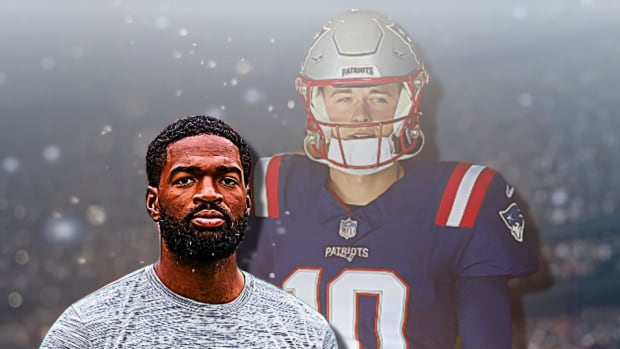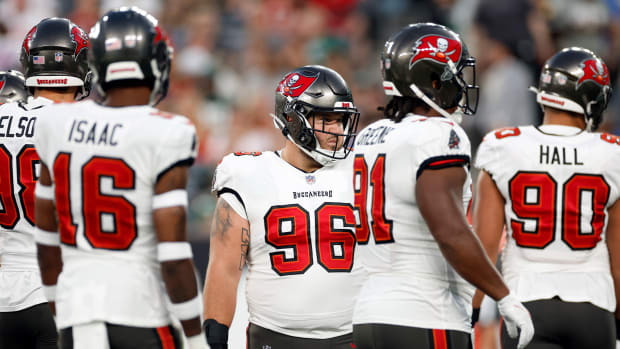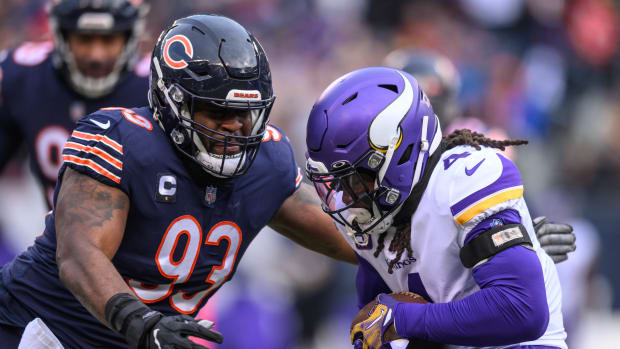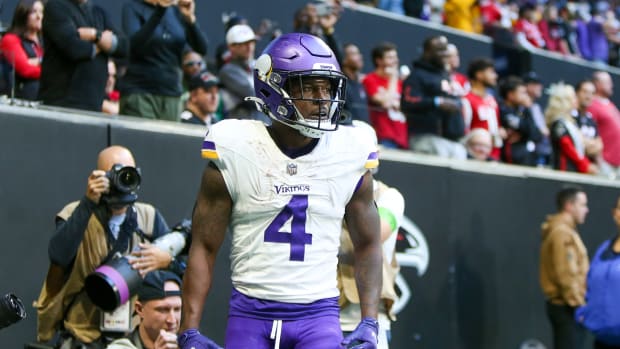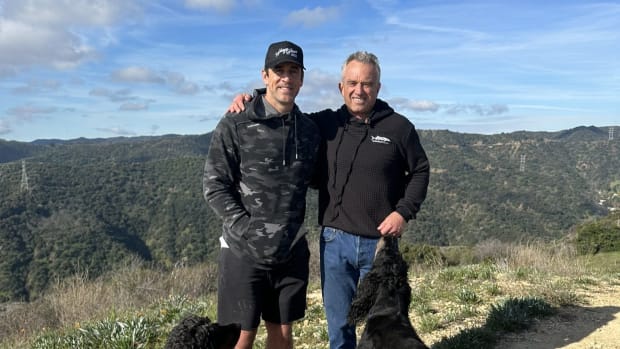Jason Pierre-Paul one big step closer to taking ESPN, Schefter to court
In a court ruling that could have significant repercussions for sports journalism, U.S. District Judge Marcia Cooke on Thursday denied ESPN and Adam Schefter’s motion to dismiss New York Giants defensive end Jason Pierre-Paul’s invasion of privacy lawsuit. The denial was part of a bench ruling, meaning an order that Judge Cooke read aloud in court without an accompanying written order. Judge Cooke’s denial, which she will explain in a subsequent written order, paves the way for a future trial. Such a trial would center on Schefter’s highly controversial tweet to his nearly four million followers on July 8, 2015. The ESPN reporter tweeted a photo of a medical chart revealing that Pierre-Paul’s right index finger had been amputated due to a fireworks accident. The tweet altered the public’s knowledge of Pierre-Paul’s injuries, which were known to be serious but not to such an extensive degree.
Panthers, Steelers, Broncos, Cardinals on Sports Illustrated's NFL preview cover
A trial pitting the 27-year-old Pierre-Paul against Schefter and ESPN executives is unlikely to occur. Chances are ESPN will offer Pierre-Paul a substantial amount of money to end the litigation through a settlement. While Pierre-Paul, who according to Spotrac has earned $24.5 million over six NFL seasons, may demand a high asking price—seven figures seems like a safe bet—a company with ESPN’s resources would be capable of paying it.
JPP has not “won” the case as a matter of law, but he may have won as a matter of reality
To be clear, Judge Cooke’s order does not mean that Pierre-Paul has won the case. It is a more limited legal victory: the denial of a motion to dismiss. Motions to dismiss are often denied. Along those lines, the standard of review for a motion to dismiss significantly favored Pierre-Paul. He only needed to convince Judge Cooke that his lawsuit contains enough facts to state a claim that is “plausible on its face.” Pursuant to this standard, Judge Cooke was required to accept all of Pierre-Paul’s allegations as true and construe them in the most favorable light to Pierre-Paul. Should a trial take place, the legal analysis would be neutral to both sides and most likely jurors would make the decision, rather than one judge.
Exclusive: Jason Pierre-Paul relives explosion that destroyed his hand
Still, attorneys for Pierre-Paul no doubt view the denial of ESPN’s motion as akin to winning the case. Attorneys Mitchell Schuster, Kevin Fritz and John Lukacs know that ESPN has the financial wherewithal to pay Pierre-Paul a sizable settlement. Further, these attorneys are aware that ESPN and Schefter likely want to avoid the discovery process that would precede a trial.
During pretrial discovery, Pierre-Paul’s attorneys would demand that Schefter admit while under oath exactly how he obtained Pierre-Paul’s medical records as well as any medical records of other players. Pierre-Paul was treated at Jackson Memorial Hospital in Miami, Fla. The hospital created, maintained and stored Pierre-Paul’s medical records—and has already reached a settlement with the Giants star. In February, the hospital fired two workers who were thought to be involved in the leak to Schefter.
These circumstances could place Schefter in an awkward position during pretrial discovery and during a trial. As a journalist, Schefter has a professional duty to refrain from disclosing information that he assured sources he would keep confidential. As a defendant in a lawsuit, however, Schefter would more likely lose a case if he comes across as uncooperative or evasive.
Pretrial discovery would likely also require ESPN’s editors and producers to answer questions under oath about the company’s investigative strategies and editing standards. Like any media company, ESPN would find such questions to touch on sensitive and proprietary topics. ESPN employees, for instance, might be asked to reveal how the company regulates the social media activity of its reporters. Questioning might also demand information about how ESPN resolves the legal implications of revealing medical information to the public.
Exclusive: Jason Pierre-Paul details his fateful fireworks accident
ESPN’s attorneys might also be concerned by a recent jury decision in another Florida case involving a public figure suing a media company over invasion of privacy: Terry Bollea (aka Hulk Hogan) v. Gawker. A jury awarded Hogan $140 million in March. To be sure, there are many differences between Hogan and Pierre-Paul’s cases. For instance, the former involves a sex tape and was tried in state court, while the latter centers on a medical record and would be tried in federal court. Still, media companies may be more reluctant these days to defend against invasion of privacy lawsuits.
Nonetheless, ESPN may choose to continue the case on principle. The network, as explained above, feels confident that its legal arguments are sound. Moreover, there is a long history in the United States of courts supporting the press and investigative reporting through the First Amendment.
The interesting legal issues at stake in Pierre-Paul’s case
Schefter’s controversial tweet, which remains online and has been retweeted 7,602 times, sparked an immediate controversy about journalistic ethics. Setting aside the tweet’s legal implications, there has been extensive conversation in newsrooms about whether the tweet was ethically appropriate. In July 2015, Sports Illustrated media columnist Richard Deitsch interviewed Schefter about the Pierre-Paul controversy. At the time, Schefter admitted that he “should have done even more here due to the sensitivity of the situation.” Schefter, however, stressed that the reported information was completely accurate and it would have come out anyway. The tweet continues to generate debate among journalists about whether it ought to be praised for breaking news of interest to the public or scorned for invading the privacy of a hospital patient.
GALLERY: JASON PIERRE-PAUL'S DAMAGED HAND
EXCLUSIVE: Jason Pierre-Paul’s damaged hand
The legal consequences of the tweet and the accompanying ESPN coverage are similarly debatable. Schefter’s tweet led some to mistakenly believe that he and ESPN violated the Health Insurance Portability and Accountability Act of 1996, better known as HIPAA. This federal law establishes intricate rules and procedures for the safeguard of medical information. HIPAA does not apply to journalists or media companies. The scope of this law is expressly limited to “covered entities,” which include healthcare providers such as physicians and nurses, along with billing and insurance companies. Essentially, healthcare parties that are in regular possession of medical records tend to fall under HIPAA’s jurisdiction. And in most cases, covered entities can only disclose a patient’s medical records with the patient’s consent.
A supposed HIPAA lawsuit against Schefter and ESPN was also problematic because HIPAA also does not provide a “private right of action.” This means that HIPAA does not offer language that would authorize Pierre-Paul or any patient to successfully sue a covered entity for breaching patient confidentiality. That said, the U.S. Department of Health and Human Services can and has imposed substantial fines on covered entities that violate HIPAA.
Understanding the NFL's motive to suspend players implicated by Al Jazeera report
While Schefter and ESPN could not have run afoul of HIPAA, Pierre-Paul’s legal team has asserted that the defendants violated two areas of Florida law: invasion of privacy and physician-patient confidentiality.
As to the first claim, Pierre-Paul has argued that Schefter and ESPN publicized a private matter that would be highly offensive to a reasonable person and is not a legitimate concern to the public. To bolster this claim, Pierre-Paul’s attorneys have cited numerous replies to Schefter’s tweet. One of the replies said, “SO INCREDIBLY UNETHICAL” while others described Schefter’s tweet as “shameful” and “disgraceful.” Still another asked, “How much did you pay for this?” Essentially, Pierre-Paul’s attorneys want the court to conclude that the public has spoken by repudiating the disclosure of Pierre-Paul’s medical record.
Pierre-Paul’s attorneys also emphasize how Schefter obtained the chart through the unlawful acts of others. As explained above, while Schefter could not have violated HIPAA, the person or persons who shared Pierre-Paul’s chart were presumably healthcare providers and thus would have violated HIPAA.
For their part, ESPN’s attorneys have categorically rejected the characterization of the tweet as not of legitimate concern to the public. ESPN cites case law where courts have ruled that a serious injury suffered by a football player is of legitimate public concern. There is logic to this argument: fans, along with media and bettors, care deeply about the health of football players. Updates on a player’s health is a regular topic in news articles since there is demand for that very kind of information.
ESPN has also cited court decisions in which published videotapes and photos of public figures, including photos showing administration of medical treatment and partial nudity, were deemed lawful. In those cases, courts found that newsworthiness outweighed privacy concerns. ESPN has stressed that Pierre-Paul is a public figure and Schefter’s tweet only contained a “fractional page of a highly technical document of words” about this particular public figure.
WATCH: Jason Pierre-Paul discusses accident in firework safety PSA
Pierre-Paul’s second claim emphasizes Florida law on the physician-patient relationship. Under Florida Statute § 456.057, third parties who obtain confidential medical records are prohibited from disclosing those records. ESPN insists that this law was never intended to classify news reporters as relevant third parties. Pierre-Paul’s attorneys, in contrast, stress that the language of the law and prior court decisions are silent on whether the scope of third parties includes reporters. Therefore, Pierre-Paul’s attorneys contend, Schefter and ESPN may be covered by it.
Impact of Pierre-Paul’s case on sports reporting
The advancement of Pierre-Paul’s lawsuit past a motion to dismiss is a significant moment in journalism and the law. Media companies and their reporters are now on notice that disclosure of visualized depictions of medical information could give rise to viable claims for invasion of privacy.
This does not mean that journalists can’t report on a player’s injury. Had Schefter only reported on Pierre-Paul’s injury and not tweeted out an image of his medical chart, Pierre-Paul’s case would have almost certainly failed. But we live in a world where images and videos increasingly accompany news stories and social media postings. The Pierre-Paul case should serve as an admonishment to reporters and editors that before they attach a video or image the concerns a player’s health, they should think twice about how they obtained that content.
Michael McCann, SI's legal analyst, is a Massachusetts attorney and the founding director of the Sports and Entertainment Law Institute at the University of New Hampshire School of Law.
































